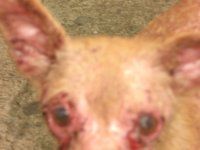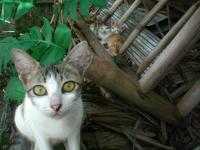Health and The Air We Breathe
Sponsored Links
In September, 1996, there was a lot of talk about the benefits of air filters in the house. So I did some investigations and wrote the following information.
In the world today, outdoor air pollution gets all the headlines, but what about indoor air pollution?
Let's analyze this thought...
When looking at the typical home we do not see the dust and dirt that exists, but the dirt and dust exists in our carpets and furniture. Doctors advise us that dust is the last great medium of infections. Germs have no means of locomotion except to attach themselves to particles of dust and dirt.
Experts warn that fumes of various cleaning products can cause learning disabilities in children. There have been actual cases of people who have been poisoned by the air in their homes. Can you imagine the impact on our pets?
Dust mites' excrement is highly prone to causing allergic reactions. These microscopic creatures live close to their food source .... dead skin. Your bedding along with your pet's bedding can become a cafeteria and breeding ground.
The ceiling which can be made from styrene, fiberglass, wood and more, are all porous materials that are convenient places for the accumulation of disease causing pollutants.
In addition, the ducts and vents found in your home are full of mold, mildew, dust and bacteria. Why does this situation exist? Well, modern homes are becoming so energy efficient that less fresh air is circulated into a room.
We're advised that only 10% of human colds are caught outdoors while 90% are caught indoors! Nature destroys germs and dust outdoors, but our energy–efficient homes keep nature out and the germs in!
Since air is so vital, it should be clean. According to the Environmental Protection Agency, there are three ways to maintain clean air:
- First, eliminate all sources of pollution, which is not exactly practical.
- Second, increase ventilation but the downside is you let pollution in especially if living in the city.
- Third, filter and re–use the air, but this method can be truly inefficient since only 10% of the air in the homes ever gets to the filter. Literally, you would need dozens of filters in your home.
Since nature always has the best solution, let's look at the way nature cleanses the air.
The sun gives off electric charges, changing some positive particulates in the air to a negative charge. These negative particles are attracted to existing positive particles and as the particles join, they become heavy and cannot stay airborne. The sun's rays then help stimulate the creation of low level ozone. As Nature's most powerful oxidizing agent, ozone completes the process of reducing contaminants to harmless natural substances.
Luckily new technology has allowed for the creation of ion generators that sweeps contaminants from the air and then creates ozone molecules to oxidize and eliminate pollutants.
Some Pollutants and Their Sources and Symptoms:
Benzene:
Found in paint, new carpets, new drapes and upholstery. Symptoms include headaches, eye/skin irritation, fatigue and cancer.
Ammonia:
Found in tobacco smoke and cleaning supplies. Symptoms include eye/skin irritation, headaches, nose bleeds, and sinus problems.
Chloroform:
Found in paint, new drapes, upholstery and new carpeting. Symptoms include headaches, asthma, dizziness, eye irritation and skin irritation.
Formaldehyde:
Found in tobacco smoke, furniture, particle board, office dividers, new carpets, new drapes, wallpaper, and panelling. Symptoms include headaches, eye/skin irritation, drowsiness, fatigue, respiratory problems, memory loss, depression, gyneco–logical problems, and cancer.
Benzopyrene:
Found in tobacco smoke. Symptoms include asthma attacks, eye/skin irritations, sinus problems, and lung cancer.
Hydrocarbons:
Found in smoke, gas burners, and furnaces. Symptoms include headaches, fatigue, nausea, dizziness, and breathing difficulty.
Trichlorethylene:
Found in paints, glues, furniture and wallpaper. Symptoms include headaches, eye/skin irritation and respiratory irritation.
Carbon Tetrachloride:
Found in paint, new drapes, new carpets, and cleaning supplies. Symptoms include headaches, dizziness and fatigue.
- The Vigilante Guardian
- Karen's Cats — All 176 of Them
- Good Energy!
- Fleas: Friend or Foe?
- Aloe Vera and All of Its Benefits
- Top 10 List
- Winnie The Pooh's Lost Story
- Prevent Bankruptcy: Make Deposits
- Trophotherapy — Food Cure
- Choices
- Raiders of The Lost Buried Bones!
- Homeopathy: A Natural Treatment
- Oil of Tamanu: Tahitian Remedy
- Consciousness of Dogs
- Health and The Air We Breathe
- Work On The Wild Side
- The African Wild Dog
- Are Antibiotics Making Your Pet Sick?
 Meet Jumbo, the participant in
Meet Jumbo, the participant in 